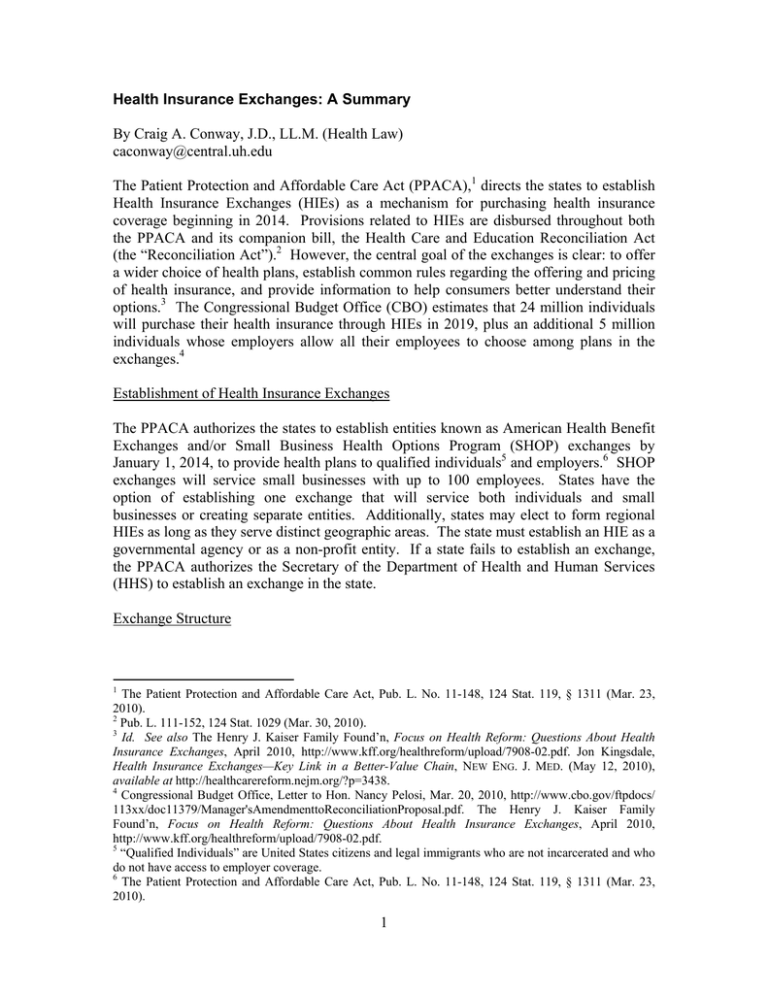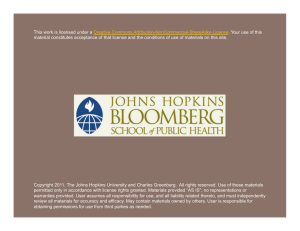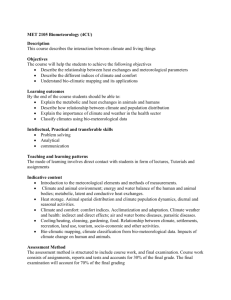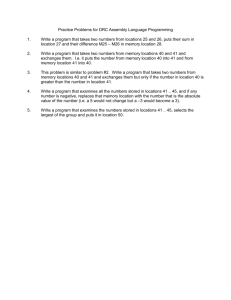By Craig A. Conway, J.D., LL.M. (Health Law)
advertisement

Health Insurance Exchanges: A Summary By Craig A. Conway, J.D., LL.M. (Health Law) caconway@central.uh.edu The Patient Protection and Affordable Care Act (PPACA),1 directs the states to establish Health Insurance Exchanges (HIEs) as a mechanism for purchasing health insurance coverage beginning in 2014. Provisions related to HIEs are disbursed throughout both the PPACA and its companion bill, the Health Care and Education Reconciliation Act (the “Reconciliation Act”).2 However, the central goal of the exchanges is clear: to offer a wider choice of health plans, establish common rules regarding the offering and pricing of health insurance, and provide information to help consumers better understand their options.3 The Congressional Budget Office (CBO) estimates that 24 million individuals will purchase their health insurance through HIEs in 2019, plus an additional 5 million individuals whose employers allow all their employees to choose among plans in the exchanges.4 Establishment of Health Insurance Exchanges The PPACA authorizes the states to establish entities known as American Health Benefit Exchanges and/or Small Business Health Options Program (SHOP) exchanges by January 1, 2014, to provide health plans to qualified individuals5 and employers.6 SHOP exchanges will service small businesses with up to 100 employees. States have the option of establishing one exchange that will service both individuals and small businesses or creating separate entities. Additionally, states may elect to form regional HIEs as long as they serve distinct geographic areas. The state must establish an HIE as a governmental agency or as a non-profit entity. If a state fails to establish an exchange, the PPACA authorizes the Secretary of the Department of Health and Human Services (HHS) to establish an exchange in the state. Exchange Structure 1 The Patient Protection and Affordable Care Act, Pub. L. No. 11-148, 124 Stat. 119, § 1311 (Mar. 23, 2010). 2 Pub. L. 111-152, 124 Stat. 1029 (Mar. 30, 2010). 3 Id. See also The Henry J. Kaiser Family Found’n, Focus on Health Reform: Questions About Health Insurance Exchanges, April 2010, http://www.kff.org/healthreform/upload/7908-02.pdf. Jon Kingsdale, Health Insurance Exchanges—Key Link in a Better-Value Chain, NEW ENG. J. MED. (May 12, 2010), available at http://healthcarereform.nejm.org/?p=3438. 4 Congressional Budget Office, Letter to Hon. Nancy Pelosi, Mar. 20, 2010, http://www.cbo.gov/ftpdocs/ 113xx/doc11379/Manager'sAmendmenttoReconciliationProposal.pdf. The Henry J. Kaiser Family Found’n, Focus on Health Reform: Questions About Health Insurance Exchanges, April 2010, http://www.kff.org/healthreform/upload/7908-02.pdf. 5 “Qualified Individuals” are United States citizens and legal immigrants who are not incarcerated and who do not have access to employer coverage. 6 The Patient Protection and Affordable Care Act, Pub. L. No. 11-148, 124 Stat. 119, § 1311 (Mar. 23, 2010). 1 The PPACA creates a minimally-acceptable base which state-created exchanges must meet. The legislation requires that HIEs will: operate a toll-free hotline to answer consumers’ questions; certify health plans as being qualified to be offered in the exchange; publicly disclose claims payment policies and practices; financial disclosures; enrollment data; denied claims; and rating practices; publish cost sharing and out-of-network payment information; create and maintain an Internet website where pricing and other plan information can be obtained; engage in plan rating for each plan in the HIE based on quality and price of benefits; use a uniform enrollment form and a standardized format for presenting understandable health benefits plan options; inform the public about Medicaid, CHIP, and other similar state program enrollment eligibility as well as coordinate enrollment procedures; make an electronic calculator available (likely on the exchange website) to determine the actual cost of coverage; and grant certifications for those individuals who are exempt from the mandatory insurance requirement if there is no available plan through the exchange or his or her employer.7 To assist in the creation and implementation of the exchanges, federal funding will be available starting in 2011 and will phase out in 2015, at which time the exchange must be self-sustaining. The PPACA also includes a public plan option which requires the federal Office of Personnel Management (OPM) to contract with plan insurers to offer at least two multi-state plans in each exchange.8 These multi-state plans will have a separate risk pool and will be a separate entity from the Federal Employees Health Benefit Program, which the OPM also administers.9 Qualified Health Plans To be certified by the exchange as a qualified health plan, insurers offering plans must meet marketing requirements, ensure a sufficient choice of providers, include providers serving low-income communities, be accredited on clinical quality measures, and use a standard format for presenting benefits information.10 Additionally, the plan must abide by insurance market regulations related to guaranteed issue, premium rating, and prohibitions on pre-existing conditions.11 7 Questions About Health Insurance Exchanges, supra note 3. Id. 9 Id. 10 Id. 11 Id. 8 2 The PPACA creates four basic benefit categories, i.e., bronze, silver, gold, and platinum, plus a separate catastrophic plan to be offered in each exchange.12 Qualified health insurers must offer at least one plan at the Silver and Gold levels in each exchange. Catastrophic plans will offer less coverage for a lower premium and are limited to individuals under the age of 30 or those who would otherwise be exempt from the requirement to have coverage because the premium exceeds 8 percent of their income. The law requires the HHS Secretary to define minimum essential health benefits for each plan category. Such benefits may include: ambulatory patient services, emergency services, hospitalization, maternity and newborn care, mental health and substance abuse services, prescription drug benefits, etc. States have the option to go above and beyond these services, but will be required to defray the cost of any additional benefits by making payments either to the enrollee or to the health plan.13 States are also allowed to prohibit abortion coverage in qualified health plans offered through an exchange if the state enacts a law to do so. However, if a plan does offer abortion coverage they must create allocation accounts to segregate the funds used for premiums or cost-sharing amounts for abortion services from the funds for all other services so that no federal subsidies are used to pay for abortion coverage.14 Conclusion Although the PPACA sets forth a framework for the establishment and general function of HIEs, states may rejoice to some degree, in the generally flexible nature of the exchanges at the operational level. Individuals who do not have access to employer or other coverage may find alternative choices in the HIEs and cost-sharing subsidies will be available to those low to moderate-income individuals to help finance their coverage.15 Additionally under the PPACA, administrative budgets for state exchanges will be covered via surcharges on transactions. Thus, it is imperative that a state exchange clearly state its purpose, guide consumers through the process of obtaining coverage, and provide all other necessary information that will maximize sales. Health Law Perspectives (July 2010) Health Law & Policy Institute University of Houston Law Center http://www.law.uh.edu/healthlaw/perspectives/homepage.asp The opinions, beliefs and viewpoints expressed by the various Health Law Perspectives authors on this web site do not necessarily reflect the opinions, beliefs, viewpoints, or official policies of the Health Law & Policy Institute and do not constitute legal advice. The Health Law & Policy Institute is part of the University of Houston Law Center. It is guided by an advisory board 12 In general, Bronze plans cover 60% of the benefit cost of the plan with an out-of-pocket limit equal to the Health Savings Account current limit of $5,950 for individuals and $11,900 for families; Silver covers 70%; Gold covers 80%; and Platinum covers 90% of the benefit costs of the plan. 13 The Henry J. Kaiser Family Found’n, Focus on Health Reform: Summary of New Health Reform Law, http://www.kff.org/healthreform/upload/8061.pdf (last updated Mar. 26, 2010). 14 See Questions About Health Insurance Exchanges, supra note 3. 15 Id. 3 consisting of leading academicians, health law practitioners, representatives of area institutions, and public officials. A primary mission of the Institute is to provide policy analysis for members of the Texas Legislature and health and human service agencies in state government. 4





